Dive into Digital Anatomy: Exploring the Best Apps
Learning anatomy made easy! This article presents seven leading apps that revolutionize the understanding of human anatomy. Whether you are a medical student, physician, artist, or simply an anatomy enthusiast – here you will find the right app for your learning style. From interactive 3D models and flashcards to detailed atlases: These tools will help you master complex anatomical structures and successfully pass exams. Discover the best "learn anatomy" apps and simplify your anatomy studies.
1. Complete Anatomy
Complete Anatomy by Elsevier is a comprehensive 3D anatomy platform that offers detailed interactive models of the human body. It is designed for a broad audience, including medical students, physicians, healthcare professionals, nurses, paramedics, but also art and design enthusiasts, anatomy lovers, physiotherapists, medical scribes, and even psychologists who require a deeper understanding of human anatomy. The app provides access to over 17,000 anatomical structures with detailed information, making it a valuable tool for teaching, learning, and practice. Particularly noteworthy is the integration of clinical correlations, which helps users understand functional anatomy in a clinical context. This is especially invaluable for medical students and physicians in their daily clinical practice.
The strength of Complete Anatomy lies in the combination of detailed 3D models with interactive features. Users can not only view individual structures, but also simulate muscle movements, examine cross-sections, and compare radiological images with the 3D models. This interactive approach promotes a deeper understanding of the spatial relationships and functions of the human body.
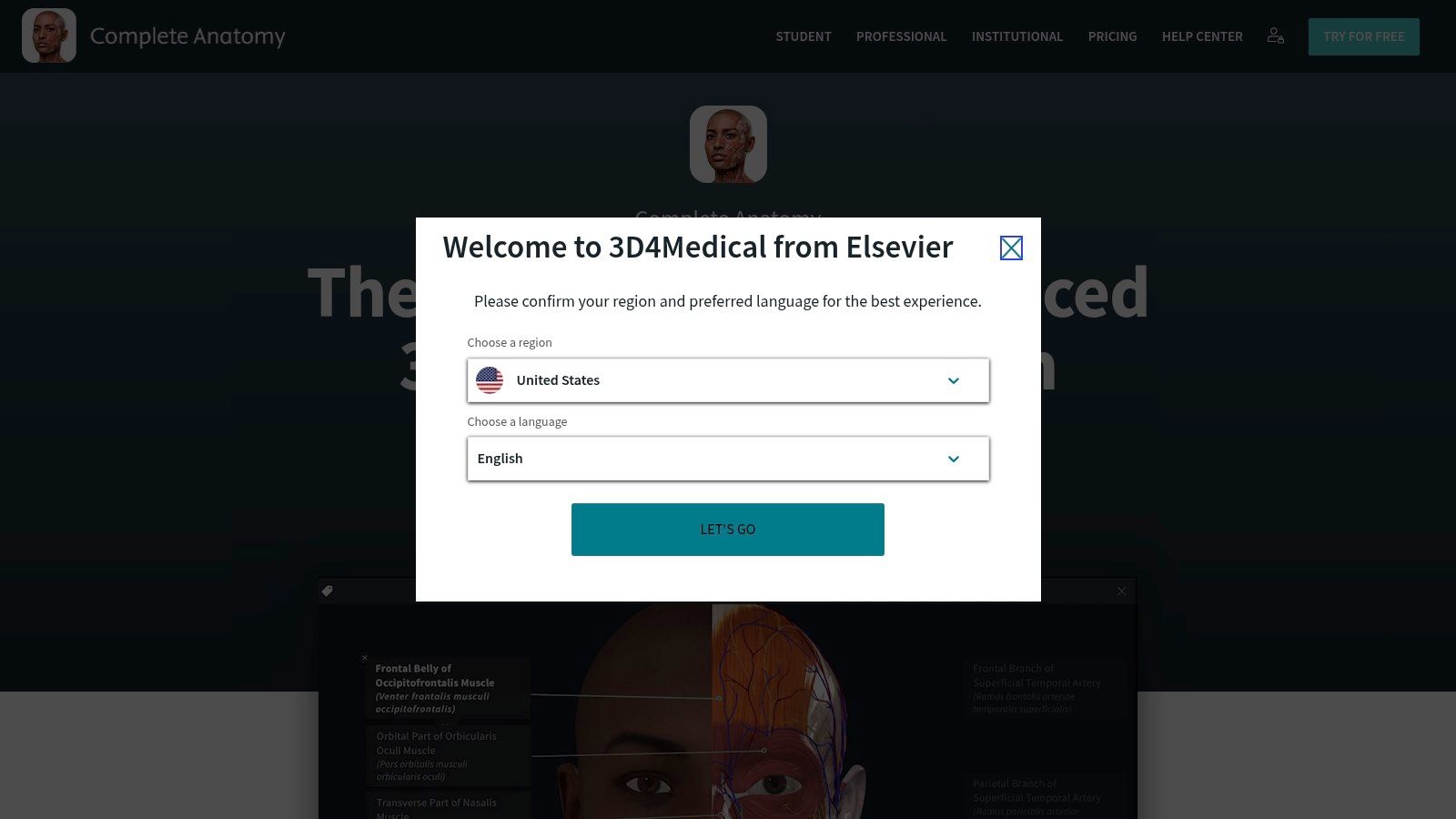
For medical students, Complete Anatomy offers an excellent way to prepare for exams by utilizing the extensive library of courses and quizzes created by medical experts. Physicians and healthcare professionals can use the app to visualize complex anatomical structures and better explain anatomy and pathology of conditions to patients. For physiotherapists, the visualization of muscle movements and joint functions is also a valuable tool in therapy planning and execution. Artists and designers benefit from the detailed representation of human anatomy for their creative work.
Complete Anatomy is available on multiple platforms (iOS, Android, Windows, macOS), which makes its use flexible. However, due to the detailed graphics, the app requires significant storage space and processing power. The higher price compared to other anatomy apps should also be noted. After a free trial period, a subscription is required for full access. Operating the app and navigating the complex 3D models requires some familiarization time to optimally utilize all functions.
Advantages:
- Highest quality 3D graphics and rendering on the market
- Comprehensive content covering all body systems
- Regular updates with new features and content
- Availability on multiple platforms
Disadvantages:
- Higher price compared to other anatomy apps
- Significant storage space and processing power requirements
- Learning curve to master all features and navigation
- Full access requires a subscription after the free trial
Website: https://3d4medical.com/
Despite the cost, the level of detail, functionality, and comprehensive anatomy coverage justify Complete Anatomy's place on this list. The app is a powerful tool for anyone who needs a deep understanding of human anatomy, and offers significant added value compared to simpler anatomy apps. The investment is particularly worthwhile for those who will use the app regularly and intensively.
2. Visible Body Human Anatomy Atlas
The Visible Body Human Anatomy Atlas is a detailed reference and learning tool for exploring human anatomy. It offers thousands of anatomical structures in fully interactive 3D models, including macroscopic anatomy, microanatomy, and physiology animations. The app is aimed at medical students, healthcare professionals, and anyone who wants to understand human anatomy in detail. It is particularly useful for anyone who needs a deeper understanding of the spatial relationships between organs and structures, whether for study, medical practice, or personal interest.
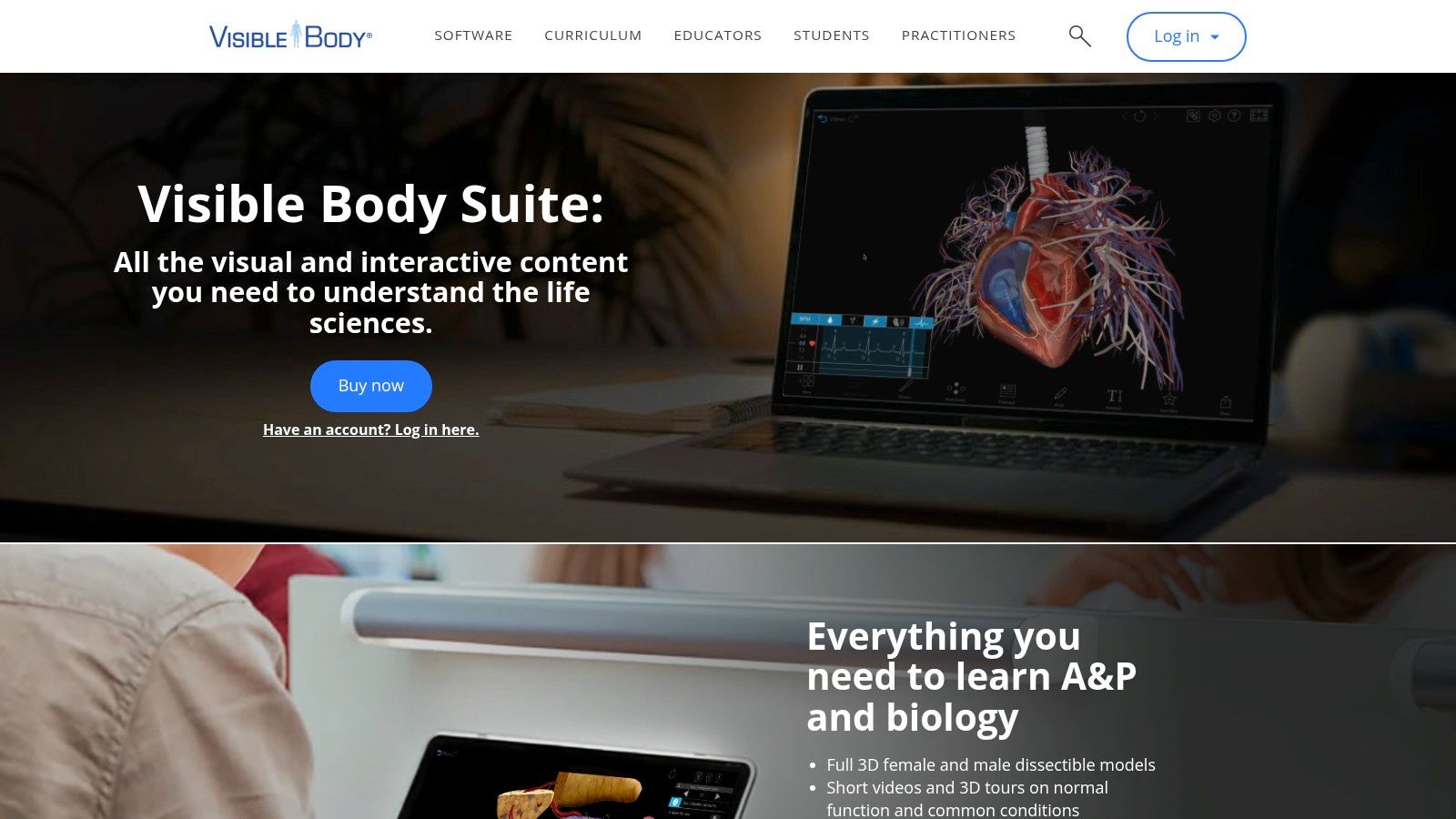
The atlas is characterized by its high level of detail and interactive features. Medical students, for example, can virtually dissect complex anatomical structures such as the heart or brain layer by layer, thus better understanding the individual components and their interaction. Doctors and medical professionals can use the atlas to explain anatomy and the respective disease to patients in an understandable way. The app also offers valuable visual support for physiotherapists, TMS writers, and psychologists to illustrate the complex relationships in the human body. Art and design enthusiasts as well as anatomy enthusiasts benefit from the detailed 3D models. Learn more about Visible Body Human Anatomy Atlas for more information about the Animus Medicus offer.
Key features include over 10,000 anatomically accurate 3D models, the ability to rotate, zoom, and dissect virtual models, pronunciation guides for anatomical terms, and multilingual support, including German. Specialized views for regional and systemic anatomy facilitate targeted learning. The app also offers integrated quizzes and learning tools, as well as the ability to create custom views and annotations.
The Human Anatomy Atlas has a premium pricing model with in-app purchases for additional content. The app also requires considerable storage space on the device. Some advanced features are only available on newer devices. Compared to some competing products, the Atlas offers fewer clinical correlations. Despite these disadvantages, the high quality of the models, the intuitive user interface, and the comprehensive learning features justify its inclusion in this list. The app is a powerful tool for anyone who wants to intensively study human anatomy, from students to experienced medical professionals. Check the system requirements and available in-app purchases before buying to ensure the app meets your needs.
3. Sobotta Anatomy
The Sobotta Anatomy app is the digital version of the renowned Sobotta Atlas of Human Anatomy, a standard work proven in German-speaking countries for over 100 years. It offers detailed anatomical illustrations, clinical images, and 3D models based on the traditional Sobotta Atlas. It is specifically aimed at medical students and professionals who prefer the Sobotta approach to learning anatomy.
Who is Sobotta Anatomy suitable for?
Sobotta Anatomy is a valuable tool for a wide range of users in medical and related fields:
- Medical students: The app supports the learning of anatomy throughout the entire course of study, from the preclinical semesters to exam preparation. The structured navigation along the medical curriculum facilitates targeted learning.
- Physicians and medical professionals: For refreshing anatomical knowledge or for illustration in patient communication.
- Nurses and paramedics: For a better understanding of anatomy and physiology in the context of patient care.
- Physiotherapists: For detailed representation of muscles, bones and joints.
- TMS Test Takers: For preparation for the Test for Medical Studies (TMS).
- Psychologists (especially Neuropsychologists): For understanding the anatomical basis of neurological processes.
- Medical Assistants: For deepening anatomical knowledge in everyday practice.
- Art and Design Enthusiasts: The detailed illustrations can also be inspiring for artistic purposes.
- Anatomy Enthusiasts: For all those interested in human anatomy and wanting to expand their knowledge.
Features and Benefits:
- High-resolution anatomical illustrations: The classic Sobotta illustrations offer detailed and precise representations of human anatomy.
- Interactive 3D Models: Allow viewing anatomical structures from different perspectives and testing knowledge with identification quizzes.
- Comprehensive German anatomical terminology: Ensures a precise understanding of technical terms.
- Clinical Correlations and Case Studies: Link anatomical knowledge with clinical practice.
- Structure-Based Navigation: Enables efficient location of specific anatomical structures.
Advantages:
- Highly regarded source material with accurate terminology: The Sobotta Atlas is an established standard work.
- Strong focus on German nomenclature: Ideal for students and professionals in German-speaking countries.
- Classic illustrations combined with modern 3D technology: Provides a comprehensive learning environment.
- Well-structured learning path that follows the medical curriculum: Supports targeted learning.
Disadvantages:
- Less interactive than some newer anatomy platforms: Offers fewer animations, for example.
- Limited animation capabilities: The dynamic representation of movements is limited.
- Traditional approach may be less appealing to some learners: The focus is on detailed illustrations and less on playful elements.
- Updates less frequent than some competitors: New features and content may not be integrated as quickly.
Pricing and Technical Requirements:
Information on pricing and technical requirements can be found on the official Sobotta website.
Comparison with similar tools:
Compared to apps like Visible Body or Complete Anatomy, Sobotta Anatomy offers a stronger focus on classic illustrations and German nomenclature. While other platforms offer more interactive features and animations, Sobotta is distinguished by the proven quality and detail of the Sobotta Atlas.
Implementation and Setup Tips:
After downloading the app, it is recommended to familiarize yourself with the various navigation options and functions. Use the search function to specifically search for anatomical structures and explore the 3D models.
Conclusion:
Sobotta Anatomy deserves its place on this list due to its well-founded anatomical representations, detailed German terminology, and strong anchoring in the medical curriculum. The app is a valuable resource for anyone who wants to build or refresh a solid understanding of human anatomy, especially in German-speaking regions.
Website: https://www.sobotta.com/en/home
4. Kenhub
Kenhub is a learning platform specifically designed to help medical students and other healthcare professionals efficiently master anatomy. The focus is on a combination of visual learning with labeled illustrations, quizzes, and the principle of spaced repetition. Kenhub offers both German and English user interfaces and terminology, making it particularly useful for students in German-speaking countries. Especially for prospective doctors, nurses, paramedics, physiotherapists, or even TMS test-takers, a sound knowledge of anatomy is essential. But Kenhub can also be a valuable resource for art and design enthusiasts, anatomy lovers, or psychologists.
Kenhub is characterized by its exam orientation. The content is prepared in such a way that it optimally supports learning for anatomy exams. The combination of different learning methods, such as visual learning materials, texts, and quizzes, appeals to different learning types and promotes a deeper understanding of the complex anatomical structures. Learn more about Kenhub for further information.
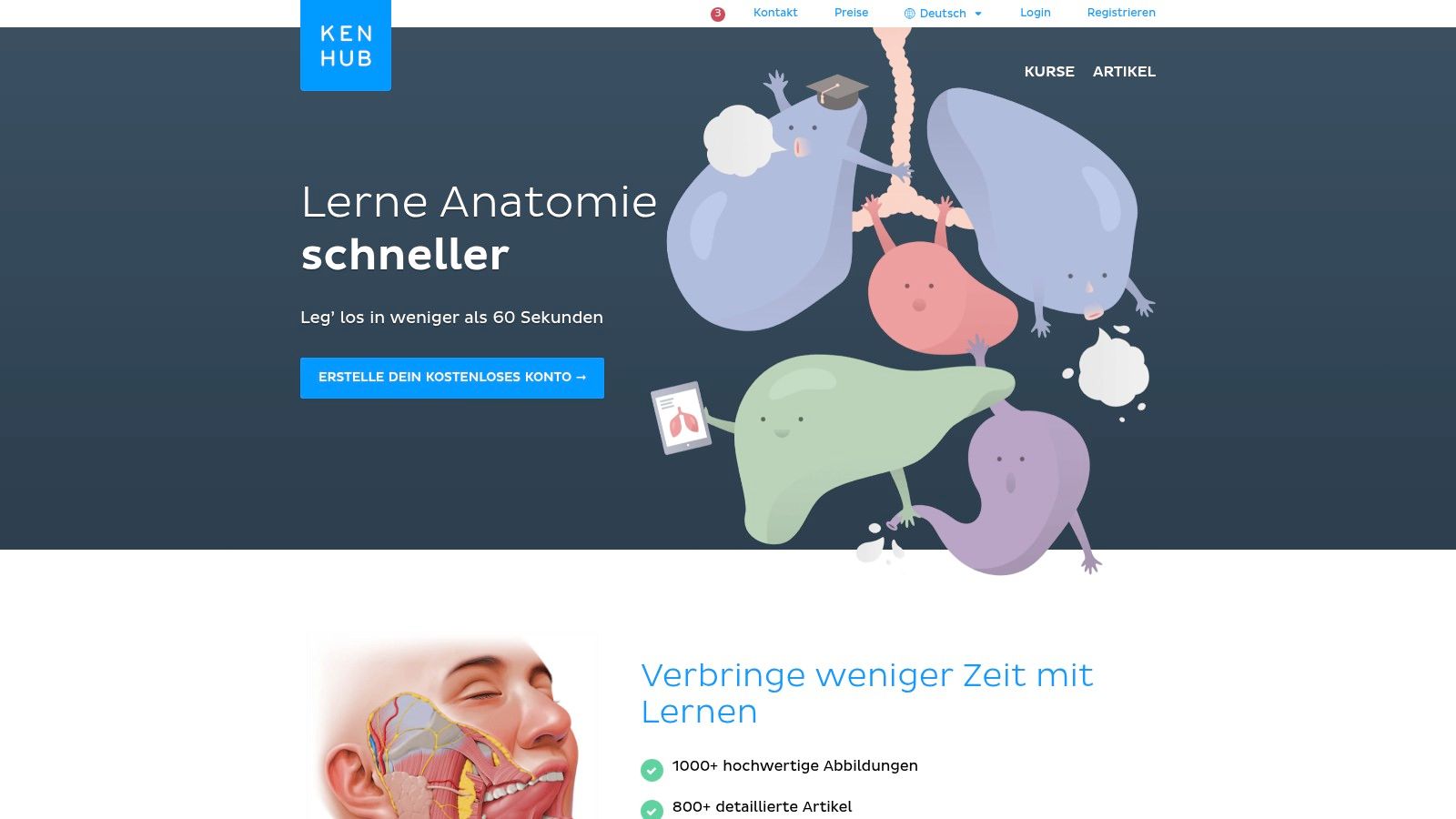
Kenhub offers over 1. 000 detailed anatomical illustrations, a specialized quiz system with spaced repetition, comprehensive anatomy articles and explanations, as well as video tutorials on complex anatomical regions. Learning progress is tracked and a personalized learning path is created. Compared to other platforms like Visible Body or Complete Anatomy, Kenhub offers less 3D content, but scores with its focus on efficient learning for exams and the excellent bilingual content (German/English). While other platforms often focus more on clinical application, Kenhub concentrates on the understanding and memorization of anatomical structures, which is essential for teaching the fundamentals in university studies. A subscription is required for full access to Kenhub. Pricing information is available on the website. The mobile apps offer fewer features than the web version, but are still a practical supplement for learning on the go. Technically, you only need an internet-enabled device (smartphone, tablet, computer) and a current browser. Setting up an account is straightforward and quick.
Advantages:
- Focused on efficient exam preparation
- Diverse learning methods (visual, textual, quiz-based)
- Excellent bilingual content (German/English)
- Science-based learning methodology
Disadvantages:
- Less 3D content compared to other platforms
- Subscription required for full access
- Mobile app with fewer features than the web version
- Stronger focus on memorization than clinical application
Kenhub earns its place on this list due to its specialized focus on the needs of medical students and other healthcare professionals seeking to learn anatomy efficiently for exams. The combination of high-quality learning materials, various learning methods, and spaced repetition makes Kenhub a valuable tool for anyone looking to deepen their anatomical knowledge. Visit the Kenhub website at https://www.kenhub.com/de for more information and to see the platform for yourself.
5. AnatomyLearning 3D Atlas
The AnatomyLearning 3D Atlas offers a comprehensive 3D model of human anatomy with a focus on ease of use and accessibility. The app is ideal for a wide audience, from medical students just beginning their anatomy studies, to physicians and healthcare professionals who want to refresh their knowledge, to art and design enthusiasts who want to better understand the human body. Physiotherapists, medical transcriptionists, psychologists, and medical assistants can also benefit from the detailed representation of the musculature, the skeleton, and the internal organs. Even anatomy enthusiasts will find this an engaging way to explore the complexity of the human body.
The app offers detailed 3D models that can be manipulated, dissected layer by layer, and viewed from any angle. This allows for an interactive learning experience that goes far beyond what is possible with traditional textbooks or static images. By selectively showing and hiding muscles, bones, and organs, complex anatomical structures can be more easily understood.
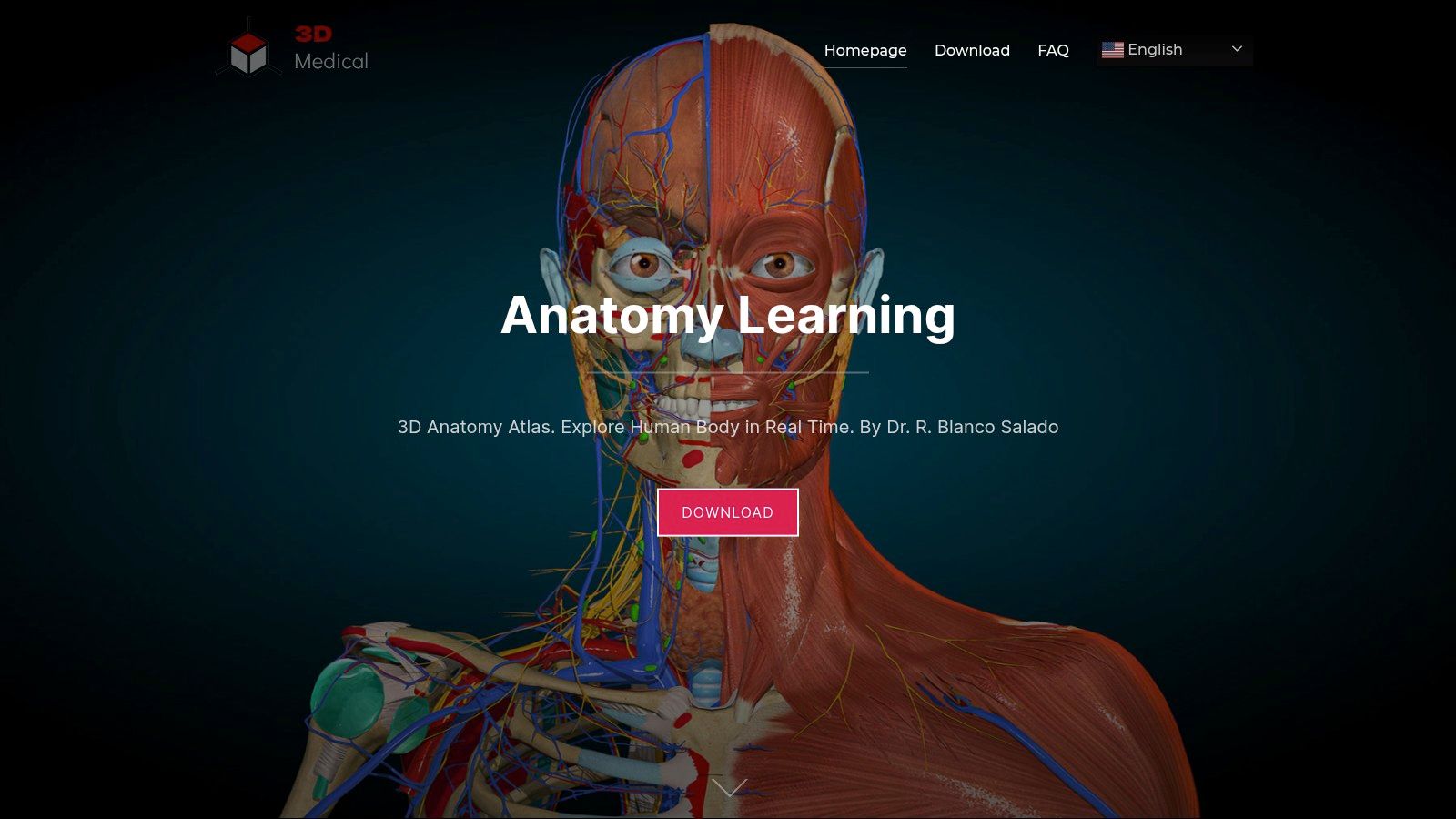
A particular advantage of the AnatomyLearning 3D Atlas is the integrated quiz mode. This allows users to test and consolidate their knowledge. The search function allows quick retrieval of specific structures, making the app useful as a reference tool in daily medical practice. Multilingual support, including German, increases accessibility for an international audience. Offline access to the content after download is particularly practical for learning on the go or in environments with limited internet connectivity.
Compared to premium anatomy apps like Visible Body or Complete Anatomy, AnatomyLearning 3D Atlas offers attractive value for money. The intuitive user interface requires minimal training time. The app is resource-efficient and runs even on less powerful devices. Pricing information is available on the provider's website. Technical requirements are moderate and are met by most current smartphones and tablets. Installation is done via the respective app store, just like any other app.
Advantages:
- More affordable than many premium anatomy apps
- Intuitive user interface
- Low system requirements
- Good balance between detail and simplicity
- Offline access
- German language support
Disadvantages:
- Less detailed models compared to premium options
- Limited clinical correlations and information on pathologies
- Fewer specialized views for specific medical disciplines
- Less frequent updates than market leaders
AnatomyLearning 3D Atlas earns its place on this list by offering a cost-effective yet powerful way to explore human anatomy in 3D. The app is particularly suitable for learners who want to build a solid basic understanding of anatomy without having to invest in expensive premium software. For more detailed representations of specific areas or for medical practice in a clinical context, however, premium apps might be more suitable.
To the AnatomyLearning website
6. PROMETHEUS Learning Cards
The PROMETHEUS Learning Cards app offers a digital extension of the popular PROMETHEUS anatomy atlases. It is primarily aimed at medical students, physicians, and medical professionals in Germany who are familiar with the PROMETHEUS system and appreciate the proven structure for efficient review of anatomical structures. The app can also be helpful for TMS writers in the area of anatomy questions.
The app works according to the principle of spaced repetition, a learning method that optimizes long-term retention through timed repetitions. The learning material is organized in the form of digital flashcards and follows the same logical structure as the PROMETHEUS textbooks, which facilitates orientation and learning. The high-quality anatomical illustrations from the books visually support the learning process. The complete German anatomical terminology ensures a precise understanding and is essential, especially for medical students in German-speaking countries.
Practical Application:
The PROMETHEUS Learning Cards App is ideal for exam preparation and refreshing anatomical knowledge. By focusing on the essential content and the systematic organization of the learning material, students can prepare for exams in a targeted manner. Physiotherapists, MFAs, and other medical professionals can use the app to deepen their anatomical knowledge and stay up-to-date. Even for art and design enthusiasts or anatomy lovers seeking a deeper understanding of the human body, the app can be a valuable resource. The anatomical basics can also be relevant in the context of psychology and the connection between body and mind.
Features & Benefits:
- Digital flashcards based on the PROMETHEUS Atlas
- Systematic organization by body regions and systems
- High-quality anatomical illustrations
- Spaced repetition algorithm for optimal memorization
- Complete German anatomical terminology
- Perfect supplement to the PROMETHEUS textbooks
- Methodical organization according to German medical studies
- Efficient exam preparation
Disadvantages:
- Limited interactivity compared to 3D apps
- No animations or motion simulations
- Primarily flashcard-based learning, less explorative
- Knowledge of the PROMETHEUS approach advantageous
Comparison with similar tools:
Compared to 3D anatomy apps like Visible Body or Complete Anatomy, PROMETHEUS Learning Cards offers less interactivity and visualization options. The focus here is clearly on systematic learning and repetition of anatomical terms and structures based on the established PROMETHEUS system. For users already working with the textbooks, the app therefore offers an ideal supplement.
Implementation & Tips:
The app is easy to download and install. To get the most out of the app, it is recommended to work with the PROMETHEUS textbooks in parallel. Learn more about PROMETHEUS LernKarten for further information and insights.
Price & Technical Requirements:
(Information on price and technical requirements could unfortunately not be found and should be added here as soon as it becomes available.
Conclusion:
The PROMETHEUS Learning Cards App earns its place on this list by offering an effective and proven method for learning and reviewing anatomical structures. It is particularly suitable for students and professionals in German-speaking countries who are familiar with the PROMETHEUS system and are looking for a mobile supplement to the textbooks. The app focuses on the essentials and enables efficient learning through spaced repetition.
Website
7. AnkiApp Anatomy
While AnkiApp isn't a pure anatomy learning app, it has made a name for itself, especially among German medical students, thanks to its flexible flashcard system. The strength of AnkiApp lies in the ability to create custom flashcards with anatomical content or access a variety of pre-made decks specifically designed for German medical exams. The proven spaced repetition algorithm optimizes learning and promotes long-term memory, which is particularly beneficial when learning complex anatomical structures, their relationships, and associated terminology.
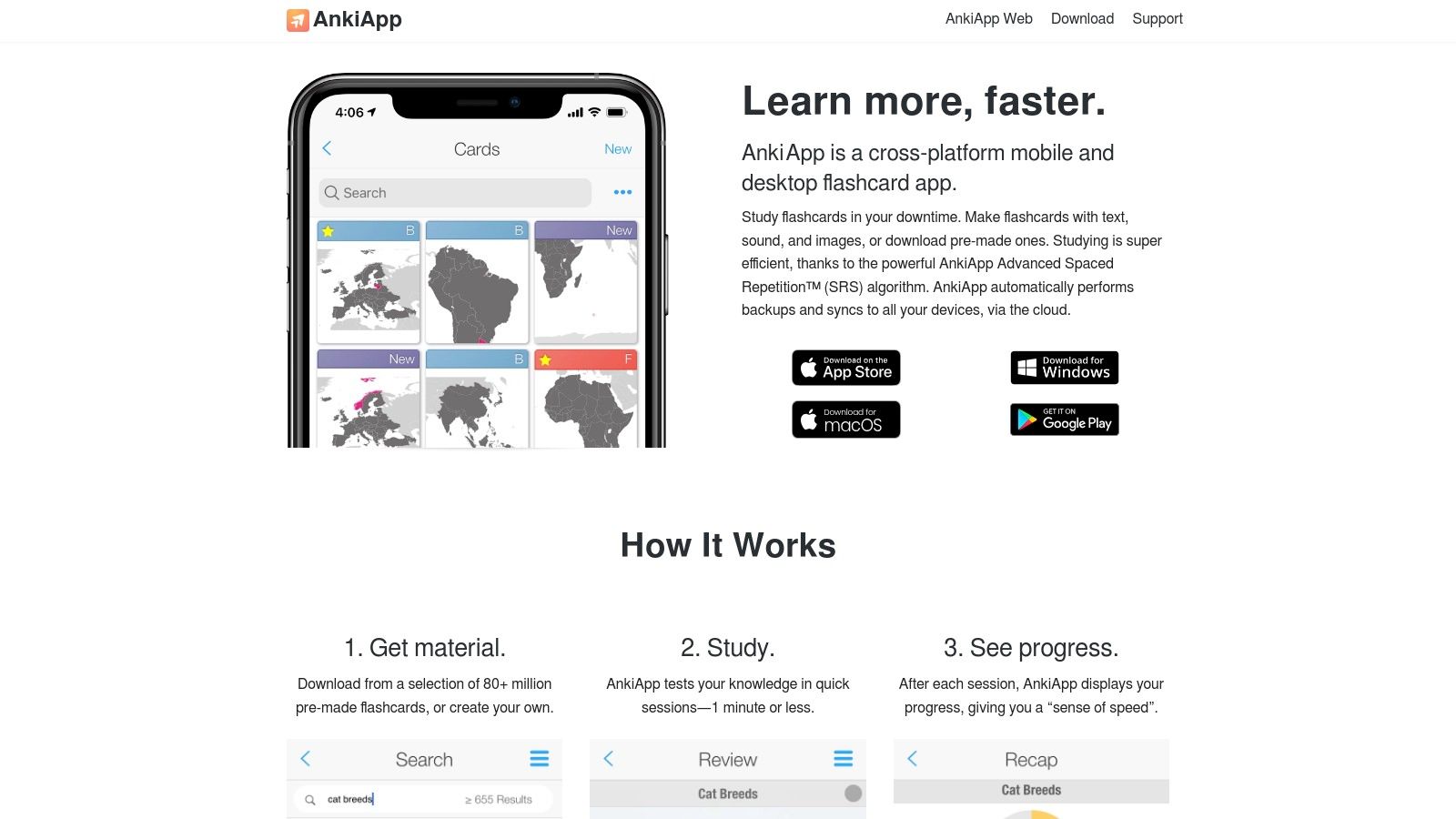
The app is ideal for medical students, physicians, nurses, and anyone else requiring anatomical knowledge. Art and design enthusiasts interested in human anatomy, as well as physiotherapists, TMS writers, and even psychologists can benefit from the detailed representation of the human body. MFAs can use AnkiApp to learn medical terminology and anatomical basics.
AnkiApp offers a free basic version, which is sufficient for many use cases. Premium features, such as unlimited image uploads and synchronization across multiple devices, are available at an affordable price. The app is available for various platforms, enabling flexible learning, whether on desktop, tablet, or smartphone. Offline use is also possible, which is particularly useful on the go or in environments with limited internet access.
Implementation tips:
- Start small: Begin with a smaller deck and expand it gradually, instead of overwhelming yourself from the start.
- Use images: Integrate images and diagrams into your flashcards to improve understanding and memorization.
- Review regularly: Stick to the learning schedule suggested by AnkiApp to get the most out of the spaced repetition algorithm.
- Connect with others: Utilize the community and download pre-made decks or share your own cards with other learners.
- Customize the settings: Experiment with AnkiApp's settings to optimally adapt the learning process to your individual learning style.
Comparison with similar tools: Compared to pure anatomy apps, AnkiApp doesn't offer 3D models or interactive animations, but scores with its flexibility and the ability to customize the learning material. Apps like Visible Body or Complete Anatomy offer more comprehensive visual representations, but are often significantly more expensive.
Advantages:
- Extremely flexible and adaptable to personal learning styles
- Very efficient for memorizing large amounts of anatomical terminology
- Free basic version with affordable premium options
- Active community that creates and shares high-quality German anatomy decks
Disadvantages:
- Not specifically designed for anatomy (general flashcard app)
- No built-in anatomical models or illustrations
- Time commitment required for creating personal decks
- The quality of shared decks can vary significantly
Website: https://www.ankiapp.com/
AnkiApp earns its place on this list due to its effectiveness, flexibility, and strong community support, especially for German medical students. Although it's not a dedicated anatomy app, it offers a powerful and cost-effective way to acquire and consolidate anatomical knowledge.
Top 7 Anatomy Learning Apps Comparison
| Product | Main Features✨ | Quality/Experience ★ | Target Group👥 | Special Features🏆 | Price💰 |
|---|---|---|---|---|---|
| Complete Anatomy | 17,000+ 3D Models, AR Mode | Highest 3D Quality, Regular Updates | Students, Lecturers, Medical Professionals | Interactive Animation, Clinical Correlation | Higher Price, Subscription Model |
| Visible Body Human Anatomy Atlas | 10. 000+ 3D Models, Rotatable & Dissectible | Intuitive Operation, Integrated Quizzes | Medical Students, Physicians | Language Support (German) | Premium, In-App Purchases |
| Sobotta Anatomy | High-Resolution Illustrations, 3D Models | Reliable, Classic Presentation | German Medical Students | Tradition & Precise Nomenclature | Standard Price, Less Interactive |
| Kenhub | 1000+ Illustrations, Quiz & Video | Efficient Exam Preparation, Bilingual | Medical Students (DE/EN) | Diverse Learning Methods, Progress Tracking | Subscription for Full Access |
| AnatomyLearning 3D Atlas | 3D Model, Layer Dissection, Offline Access | Intuitive and easy operation | Broad student base, advanced learners | Good price-performance ratio | Affordable |
| PROMETHEUS Learning Cards | Digital flashcards, systematically organized | Efficient exam preparation | German medical students | Familiar PROMETHEUS content | Cost-efficient |
| AnkiApp Anatomy | Customizable flashcards, community-shared decks | Flexible and efficient | Medical students | Free basic version, user-defined content | Free, premium optional |
Level Up Your Learning: Choosing the Right Anatomy Learning App
Choosing the right anatomy learning app can significantly improve your understanding and retention of complex anatomical concepts. From immersive 3D models and classic illustrations to efficient flashcard systems – we've presented seven apps in this article tailored to various learning styles: Complete Anatomy, Visible Body Human Anatomy Atlas, Sobotta Anatomy, Kenhub, AnatomyLearning 3D Atlas, PROMETHEUS LernKarten, and AnkiApp Anatomie. The key to successfully integrating these tools lies in considering your individual needs and learning preferences.
The most important points to consider when choosing are the visual representations, the available features (e.g., quizzes, labels, zoom), the user-friendliness, and of course, the cost. Consider whether you prefer detailed 3D models or if 2D illustrations and concise texts are sufficient. Do you need interactive exercises or are you focusing on memorizing structures?
To get the most out of your chosen anatomy learning app and improve your retention, you should also use active learning methods. Effective strategies such as taking notes, summarizing information, and retrieving knowledge from memory can significantly increase your learning success. For example, learn about different active reading methods to optimize your learning.
Find the app that best suits you and begin your journey to becoming a master of anatomy! For an even more comprehensive learning experience that combines the benefits of digital tools with traditional learning, discover Animus Medicus. Animus Medicus offers high-quality anatomical learning materials and courses that will help you deepen your knowledge and expand your skills.